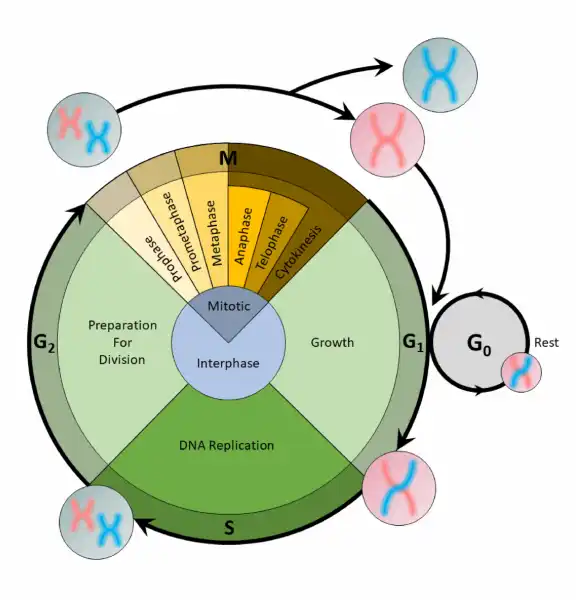What phase is the cell cycle part of?
A. Interphase
B. Metaphase
C. Prophase
D. Telophase
Before mitosis or meiosis occurs, interphase must happen. This is when the cell cycle takes place. The cell cycle is an organized process divided into two phases: interphase and the M (mitotic) phase. During interphase, the cell grows and copies its DNA. After the cell reaches the M phase, division of the two new cells can occur. The G1, S, and G2 phases make up interphase.

Therefore, the Correct Answer is A.



